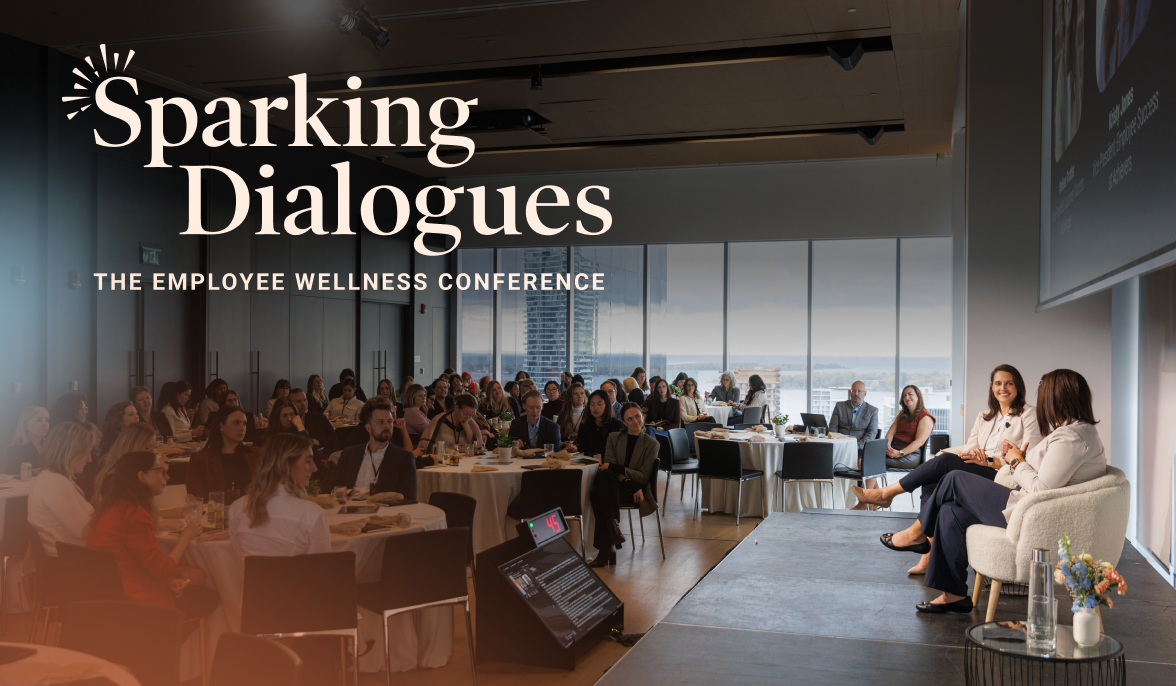Over 70% of Canadian HR leaders say that talent attraction and retention is an ongoing challenge. And, over a quarter of employers expect employee turnover to increase this year.
These concerns and expectations are a reflection of reality: 42% of workers have already started looking or plan to look for a new job in the first half of 2024.
While employee retention has long been an issue for companies and their staff, it’s often hard to quantify the real costs of high turnover — or fully understand the causes. And while there are plenty of factors that might contribute to low retention, one of the biggest and most overlooked factors is employee wellness.
Understanding the causes of poor retention
One reason employees are seeking new jobs or have already left is well-being — the need to feel supported and cared for by their employer, both at work and beyond.
Much like with quiet quitting, workers still face and grow tired of toxic work cultures — a facet of modern businesses that leads to high employee turnover. Research shows that unhealthy workplace cultures lead to poor communication, lack of work-life balance, and increased burnout and stress — the latter has worsened for 55% of Canadian employees.
Likewise, nearly half of workers — whose workplaces do have an employee wellness program — note that the benefits aren’t meeting their needs, like support for mental health.
Understanding the costs of high turnover
Hiring and onboarding costs: The cost to replace an employee is three to four times the position’s salary. And that cost only rises as senior employees leave: replacing a high-level employee, who has a large salary and specialized training, can cost up to 213% of their salary.

Diminished productivity: New hires typically require time to reach full productivity levels, leading to temporary dips in performance and output. Therefore, employee turnover costs businesses an average of $57,150 per year in disrupted workflows.
Lost tribal knowledge: When experienced employees leave, they take valuable institutional knowledge, skills, and expertise with them. An estimated 42% of the expertise required to perform a given position is known only by the person currently in that position. That lost knowledge costs the average large company $47 million a year.
While the more quantifiable costs are damaging, there are also less perceptible long-term costs of poor employee retention. When turnover is high, customer loyalty, trust, and employer brand reputation are all at stake.
How employee assistance programs (EAPs) can reduce turnover
While boosting salaries and other benefits is crucial to keep employees happy, research shows that 80% of employees report better job satisfaction when their workplace has a wellness culture — 89% of employees believe their employers should focus on this.
EAPs are essential for the 47% of people who rely on their employee benefits. And they play a critical role in supporting mental health, financial stability, healthy relationships, and work-life balance.
The right EAP can have a lasting impact on organizational health.
.jpg?width=1128&height=596&name=Blog%20Visual%202%20EN%20(1).jpg)
So, why don’t organizations prioritize EAPs?
Lack of employee awareness around benefits: Roughly 1 in 3 employees are unaware of workplace mental health support, even when available. Plus, many EAP providers don't assist with program onboarding and engagement, leaving organizations to fend for themselves.
Lack of personalization and follow-up: EAPs that don’t offer personalized support often miss the mark. In fact, it’s a top priority for 92% of employees seeking care. And another 86% want follow-ups from providers, a feature not always offered through EAPs.
Outdated and confusing resources: Many EAPs are complicated to access, making employees call 1800 numbers, endure long waits, or piece together support across different channels. For employees, having all resources in one place is a must — 75% report it being a priority. For organizations, the scattered resources frequently result in extra workload for HR teams.
Implementing an effective EAP for retention
While many EAPs come with challenges, the right one offers effective implementation, personalized care, and high-quality, consolidated resources.
When selecting an EAP provider for your organization, choose a platform that offers a few key things, like:
Virtual services
- Ensure the EAP platform provides access to virtual therapy sessions and counselling services, allowing employees to connect with licensed professionals remotely via phone or video conferencing for maximum reach and accessibility.
- Look for a platform that offers online support resources, such as self-help articles, webinars, and educational materials.
Personalized support
- Choose an EAP that conducts personalized assessments to understand each employee's unique needs, challenges, and preferences, and creates a tailored treatment plan.
- Prioritize follow-up sessions or check-ins to monitor progress, provide ongoing support, ensure effective treatment, and adjust care plans as needed.
Referrals
Programs that collaborate with a network of trusted external providers, such as therapists, counsellors, psychiatrists, or support groups, helps ensure employees have access to a range of options.
Seamless integration and awareness
- Select a provider that lets employees manage all their health and wellness needs on one platform, and centralizes health information for a cohesive experience. This way, various programs, like primary care and EAP, team up to offer a smoother care experience.
- Partner with a benefits provider that not only assists with program onboarding, engagement, and re-engagement, but also measures the effectiveness and performance of your EAP.
Ramp up employee retention with Dialogue
Employee health and wellness are key to the success of any organization — no matter its mission. With a robust, personalized, high-quality EAP, employees can feel more satisfied in both their personal and working lives, which also helps an organization’s bottom line.
With Dialogue, employers can take advantage of high-touch, personalized care for their team. From supporting mental and physical health to encouraging better work-life balance, Dialogue helps organizations create workplace cultures and environments that are built for success, for everyone.
Learn more about what to look for in an outcomes-driven EAP.




 Canada (EN)
Canada (EN)
 Global (EN)
Global (EN)








